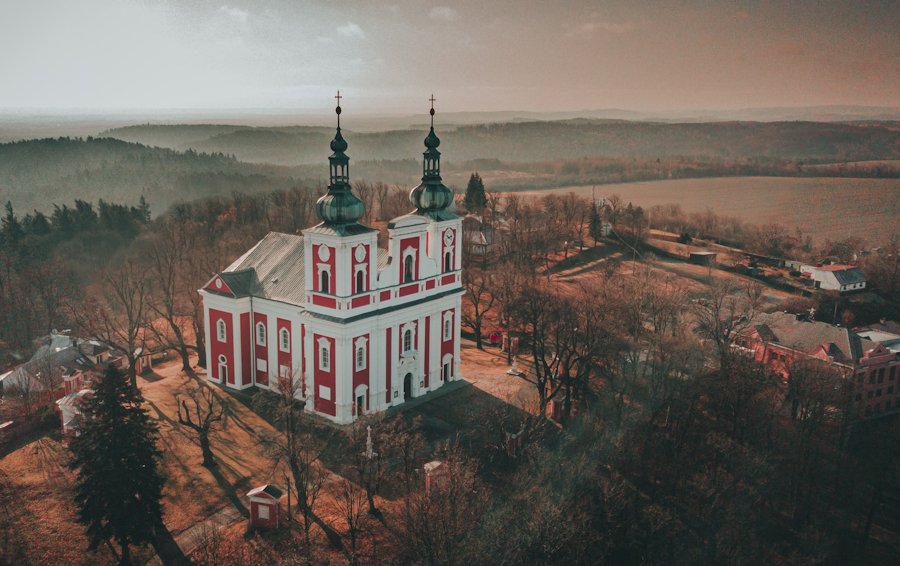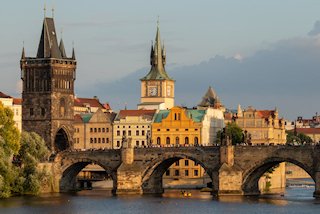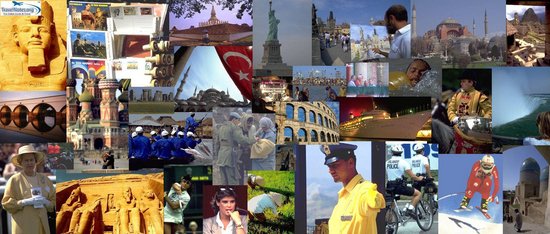Travel Notes: Europe - Czech Republic Travel Notes.
Short URL: https://tnot.es/CZ
Czech Republic Travel and Tourism on Travel Notes
Czechia Tourism - Discover Czech Republic's Hidden Treasures
To experience the authentic charm of travel in Czechia, explore lesser-known destinations in the Czech Republic like Cesky Krumlov, Kutna Hora, and Telc. Share on Facebook
About Czech Republic
The Czech Republic (Czechia) is a fascinating destination that appeals to travellers. Visit Prague, Cesky Krumlov, Karlovy Vary, and the Bohemian Switzerland National Park (České Švýcarsko) for starters.
Countries neighbouring Czechia: Germany, Poland, Slovakia and Austria.
Driving Distances in Europe
 Add a Business -
Add a Location -
Add a Lodging - Add Travel Content
- Add URL
- Travel Services.
Add a Business -
Add a Location -
Add a Lodging - Add Travel Content
- Add URL
- Travel Services.
Mapping The Czech Republic (Czechia)
Map of Czech Republic
The Czech Republic, known in short-form name as Czechia (since 2016), is a landlocked country located in Central Europe.
Czech Republic Overview
Czechia rests on elevated tablelands, known as the Bohemian Plateau, which stretch west to the border with Germany and east to Slovakia.
The Bohemian Forest forms Czechia's south-western border with Germany and Austria.
Czechia has a population of around 10.7 million people and its capital and largest city is Prague.
Beer Drinking
The Czech Republic is also famous for its beer (pivo), with the city of Pilsen being the birthplace of Pilsner beer, one of the most popular beer styles in the world.
The original Budweiser, Budweiser Budvar is from České Budějovice (Budweis, in German) and is a very popular pale lager.
Cultural Heritage
The Czech Republic has a rich cultural heritage, with a history that dates back to the 9th century when it was part of the Great Moravian Empire.
It later became part of the Austro-Hungarian Empire and was then part of Czechoslovakia before becoming an independent country in 1993.
Economy
The Czech Republic has a developed industrial and service sector, with a focus on exports.
Its economy is the most developed in the Central and Eastern Europe region, and it is a member of the European Union.
Language and Currency
The official language is Czech, and the country uses the Czech koruna as its currency.
Republic of Czechoslovakia
The Czech Republic (Czechia), a part of the former Republic of Czechoslovakia, was established on 1st January, 1993; when the Czechoslovak Federal Republic split into two independent states, the Czech Republic and Slovakia.
Stunning Architecture
Czechia is known for its stunning architecture, including the Gothic Charles Bridge and the Old Town Square in Prague, as well as the impressive St. Vitus Cathedral in the Prague Castle complex.
Tourism
Czechia is a popular tourist destination, attracting millions of visitors each year with its stunning natural beauty, rich cultural heritage, and vibrant cities.
Czech Bus and Train Timetables:
The national information system of Czech passenger transportation.
UNESCO World Heritage
The Czech Republic is also home to several UNESCO World Heritage sites, including the historic center of Prague, the Lednice-Valtice Cultural Landscape, and the Kutná Hora Historical Town Center.
Visit The Czech Republic
Visiting the Czech Republic can be a wonderful experience.
Located in the heart of Europe, the Czech Republic is a small country with a rich history and culture.
Places to Visit and Things to Do in the Czech Republic
Immerse yourself in the country's rich traditions and customs and make sure to take time to explore the local culture and history.
Bohemian Switzerland National Park
Located in the north of the country, this national park is a great destination for hiking, climbing, and exploring natural wonders like the Pravčická brána, Europe's largest natural sandstone arch.
Český Krumlov
This picturesque town located in southern Bohemia is a UNESCO World Heritage site known for its medieval castle, narrow streets, and colourful buildings.
Czech Beer and Cuisine
Czechs are famous for their beer, and there are many breweries and pubs where you can taste the local brews.
You can also try traditional Czech cuisine like roast pork with dumplings and sauerkraut, or goulash with bread dumplings.
Karlovy Vary
This spa town in western Bohemia is known for its hot springs and healing waters. You can also enjoy scenic walks, historic architecture, and local cuisine.
Kutná Hora
Another UNESCO World Heritage site, Kutná Hora is an historic town located east of Prague.
The town's most famous attraction is the Sedlec Ossuary, a church decorated with human bones.
Prague (Praha)
Map of Prague
Located in the central Bohemia region, on both banks of the Vltava River, The capital city of the Czech Republic is famous for its stunning architecture, including the Charles Bridge, Old Town Square, and Prague Castle.
You can also enjoy a wide variety of cultural events, museums, and restaurants.
Settlement
The settlement of Prague dates from the 9th century, when it was the site of several Bohemian castles.
The city started to grow in the 13th century with the establishment of German communities by King Wenceslas I of Bohemia.
The German colonists developed the city rapidly, establishing the Altstadt in 1232. Trading prospered and the Neustadt was built to the south-east a century later.
Prague is one of the most picturesque cities in Europe, and since the fall of Communism has become a popular tourist destination; especially among young backpackers, who know about a good deal quickly.
Many bridges join the two parts of the city together, of which the most famous is the Karlsbrucke - Charles Bridge.
Charles Bridge was built in the 14th century and later adorned with statues of saints.
Painters and buskers use the bridge and unfortunately so do a few snatch thieves when it's crowded.
The main towns are on the east bank, the older part characterised by its crooked streets and architectural relics of Bohemian grandeur.
The 14th-century Tyn Cathedral was a centre of the religious revolt of the Hussites. The 14th-century town hall, Staromestska Radnice, is also in the Old Town.
The New Town has many public buildings, museums, and banks.
Lesser Town
A gentle stroll across Charles bridge rewards your eyes with a number of Baroque palaces.
Above this district and dominating the entire city is Hradcany Castle; formerly the home of the kings of Bohemia and the President of the Czech Republic's residence today.
Next to the castle is the Gothic-style Cathedral of St Vitus, which contains the tombs of many Bohemian kings.
Exploring Prague:
Prague Castle has stood on the hill overlooking the Old Town since the 10th century; with
the city growing up around the castle, over the centuries.
Prague
Hostels:
Prague is high on the budget traveller's list of places to visit in Europe so you'd be
wise to make your reservations online as the best places fill up quickly.
During World War II Prague was occupied by German forces, but escaped major damage.
Soviet troops invaded Prague in August 1968, and the city was also was the site of extensive non-violent demonstrations that led to the downfall of Czechoslovakia's Communist regime in 1989.
Prague Travel Guide - Your Complete Guide to the Golden City:
Prague consistently ranks among the most captivating capitals in Europe,
thanks to fairytale architecture, legendary beer culture and vibrant
nightlife scene.
Prague Travel Tips
When arriving at Prague airport don't bother haggling with the taxi drivers.
A fast and extremely cheap way into the city is the number 119 bus, which departs outside the terminal and runs from 5am until 8pm.
You'll need change to buy a ticket (available from the machines next to the bus-stop) so buy something in the airport first.
Where to Stay in Prague
Brno
If you're heading to Bratislava from Prague you'll probably pass through Brno.
Brno was founded in the 9th century and became a free city of the Holy Roman Empire in 1278.
The Cathedral of St Peter and St Paul dates from the 15th century, the Rathaus from the 16th century, and the Landhaus was built a few hundred years later.
Before World War I the city was the capital of the Austria-Hungarian crown land of Moravia.
Where to Stay in Brno
Pilsen (Plzen)
Located in western Bohemia, Pilsen is the fourth largest city in the Czech Republic.
Founded by the Czech King Wenceslas II, Plzen is today famous for the brewing of Pilsner beer; a good enough reason to visit.
If you're not interested in the brewery you might like to stop at the 13th-century Gothic church, and the 16th-century Renaissance town hall.
Where to Stay in Pilsen
Around The Czech Republic
Czech Tourism
The cultural character of Czech cities, villages and spa towns has always been a source of inspiration for Visitors to Czechia, who come from all corners of the world.
Cesky Tesin
The Olza River separates the Czech city of Ceske Tesin from the Polish city of Cieszyn.
The town was divided between Czechoslovakia and Poland in 1920, and reunited under Polish rule in 1938.
Germany annexed the towns during World War II, and Ceske Tesin joined Czechoslovakia after the war.
Ceske Budejovice
Ceske Budejovice is the largest city in South Bohemia.
Hradec Kralove
Situated on a hill between the Orlice and Elbe rivers, east of Prague, the old town has many medieval buildings around its 14th-century cathedral.
Liberec
Liberec, founded in the 14th century, was nicknamed the Bohemian Manchester because its principal industry was the manufacture of textiles.
If you intend to venture north of Prague, there is a 16th-century church and a 17th-century castle here.
Olomouc
Olomouc is the second most historical city in The Czech Republic and a gateway to the Jeseniky mountains.
Ostrava, in eastern Czech Republic, was founded in the late 13th century by the bishop of Olomouc as a protection against invaders from the north.
Czech Republic Attractions
Czech Language
The official language of Czechia is Czech, which is closely related to Slovak. Both Czech and Slovak use the Roman alphabet.
Moravian, a transitional language between Czech and Slovak and comprising a group of dialects, is also spoken, along with German, Hungarian, and Romany.
Most speakers of minority languages can speak Czech and the younger generation also speak English or German.
Czech Republic Maps and Travel Guides
Czech Republic Travel - Czech Republic Maps.
Weather in Europe:
Local weather forecasts for destinations around Europe.
|
|
More From Travel Notes
Travel Notes Online Guide to Travel
Africa - Asia - Caribbean - Europe - Middle East - North America - Oceania - South America.
The Travel Notes Online Guide to Travel helps visitors plan their trip with country and city travel guides, local tourist information, reviewed web sites, and inspiring travel content.
Travel and Tourism Guides on Travel Notes
 If you find Travel Notes useful, please take a moment to
like us on Facebook and share with your friends on social media.
If you find Travel Notes useful, please take a moment to
like us on Facebook and share with your friends on social media.
Share on Facebook
Travel Resources
.
Travel & Tourism With Industry Professionals.
















